FORMULA E
Shell on the development of lubricants for electric vehicles
McLaren MCL60
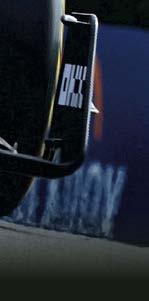

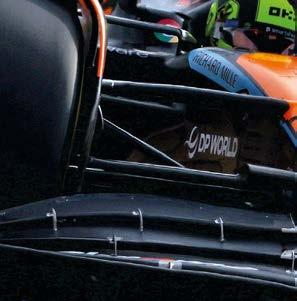

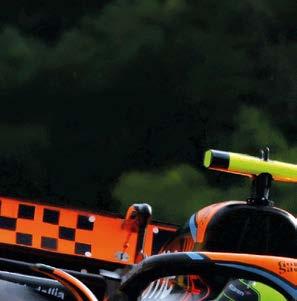

How mid-season upgrades pushed British Grand Prix team to the front

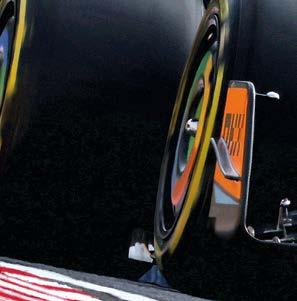
ONE LAP WONDERS



Mad machines tackling the UK Time Attack series

ELECTRIC RALLYCROSS
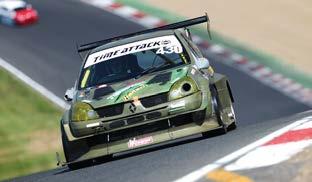
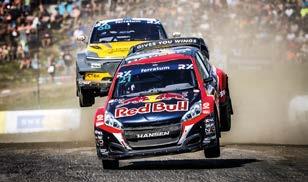
Under the skin of batterypowered sprint cars
NISSAN SKYLINE EVIL34 Ricardo Divila’s last project completed

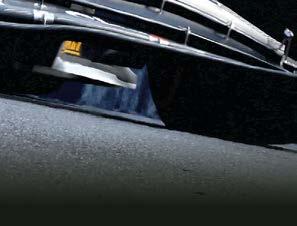

Inside the world of modern motorsport technology
UK £5.95 / US $14.50 October 2023 / Vol 33 No 10
Pathfinders
McLaren has taken strides towards the front of the grid with this season’s MCL60. Racecar investigates the car that has returned the Woking team to the sharp end
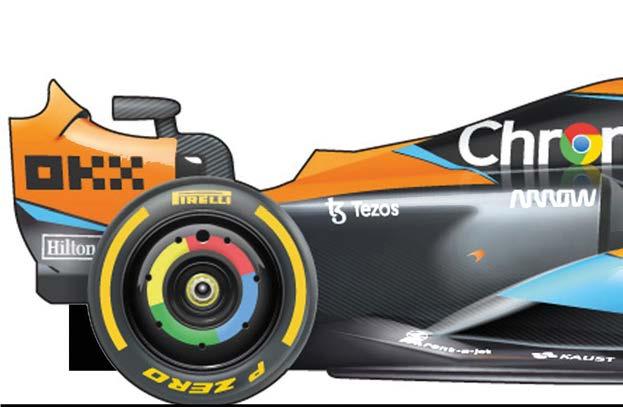


Words and illustrations
by PAOLO FILISETTI
MCL60 early season vs Silverstone version
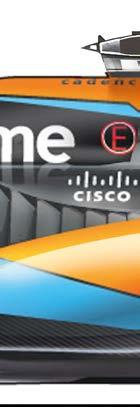
Comparing the side view of the two versions highlights the main areas of change. At floor level, the lower flow diverters and outermost barge board have clearly been modified, with greater vertical extensions
The sidepods have a raised lower profile to increase the channel between them and the floor. The upper profile of the sidepods introduced in Canada is also different, featuring a sculpted recess along its entire length, similar to those of the Aston Martin AMR23. This serves to increase the pressure of the airflow towards the cars’ rear end
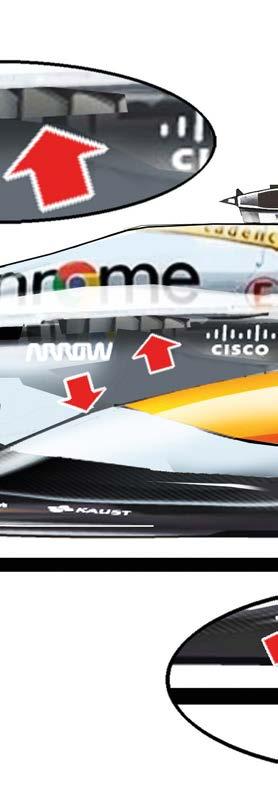
The large vertical slits have also disappeared, in their place gills have been introduced at the base of the engine cover.
The position of the ‘pockets’ under the vehicle floor are also different, a result of efforts made to manage porpoising
6 www.racecar-engineering.com OCTOBER 2023 FORMULA 1 MCLAREN MCL60
The car is, to all intents and purposes, an evolution of the 2022 MCL36
The McLaren MCL60 has returned the company to the sharp end of the grid. The car is the fourth single-seater racecar designed by James Key, and the last before his departure from the Woking, UK-based team.
The car is, to all intents and purposes, an evolution of the 2022 MCL36. In fact, the version seen starting from the pre-season tests in Bahrain corresponded well to the one seen in Abu Dhabi in the last race of last year. However, it has had some
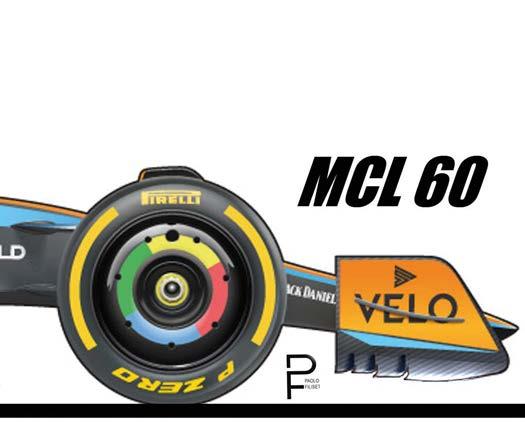
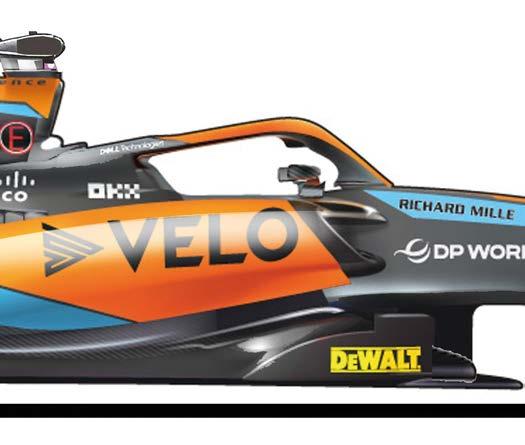

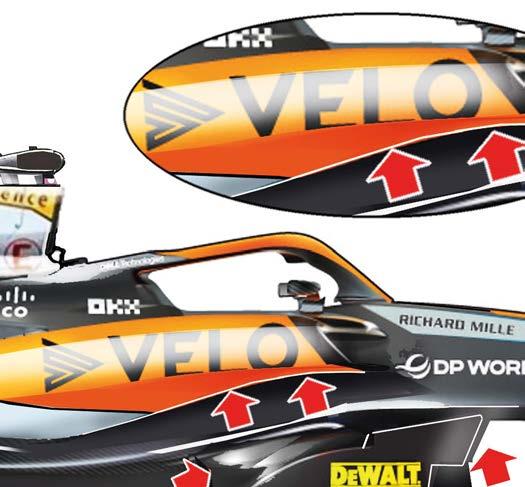
significant upgrades that have elevated the car from one that was capable of only fifth in the Constructors’ standings last year to a podium contender.


The MCL36 undoubtedly performed below the team’s expectations during the 2022 season. It was the only F1 car to share the same suspension layout with the Red Bull RB18, adopting a pullrod at the front and a pushrod at the rear. The MCL36 was also one of the cars that suffered most from porpoising last season.
However, the difference between the suspension layouts of the Red Bull RB18, and this year’s RB19, and those of the McLaren MCL36, were blatantly evident.
The Red Bulls can be characterised by very high anti-dive at the front, combined with an equally accentuated and effective anti-squat at the rear. This concept, in combination with a floor featuring a striking design of venturi channels, has proven to be effective against porpoising, effectively making both the RB18 and RB19 immune to the phenomenon.
OCTOBER 2023 www.racecar-engineering.com 7
Illustrations: Paolo Filisetti
Student union
EVs outnumbered ICEs for the first time at Formula Student UK in 2023, but simulation, testing and validation proved to be the winning combination
 By CRAIG PORLEY
By CRAIG PORLEY
14 www.racecar-engineering.com OCTOBER 2023 FORMULA STUDENT – UK 2023
Photos: Richard Mead
Formula Student UK celebrated its 25th anniversary at this year’s competition, held at Silverstone, the home of British motor racing. Teams came to compete from 17 different countries
Formula Student UK (FSUK) celebrated its 25th anniversary this year. Held at the famous Silverstone circuit, the epicentre of UK motorsport, the competition once again delivered innovative technologies, controversial concepts and its fair share of dramatic racing.
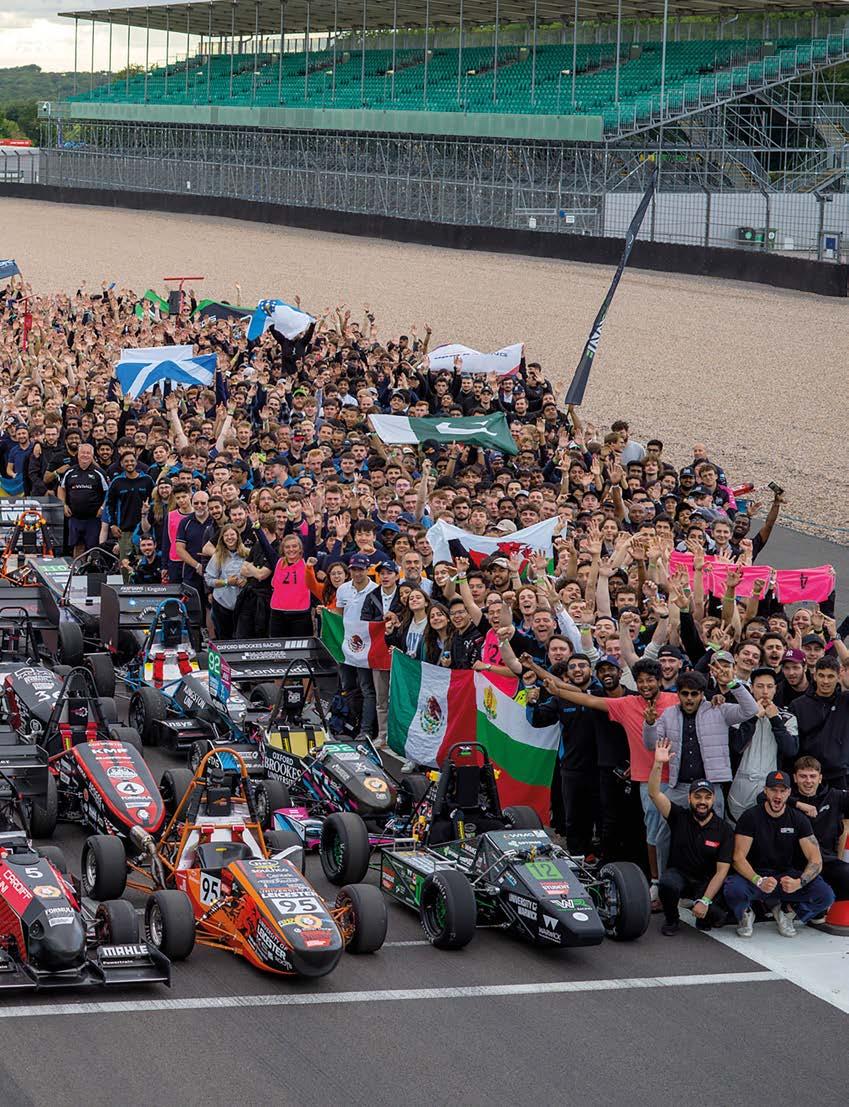
Unlike the heatwave of last year, this year’s forecast included weather warnings for wind and rain, although this did little to dampen the spirits of the 91 teams that arrived from 17 different countries to compete.
The FSUK competition is essentially split into two halves, the first being the static
events and scrutineering that take place on Thursday and Friday, while the main dynamic events such as Acceleration, Sprint and Endurance occur across the weekend. Any team with aspirations of outright success must take both aspects seriously.
Engineering Design
The most important static event is Engineering Design, where teams can score up to 150 points, making this event alone worth 15 per cent of the total points available in the competition. Consequently, teams that make the Design finals are generally a good
indication of the likely front runners when the wheels start turning in earnest.
Formula Student stalwart, Oxford Brookes Racing (OBR), took top honours with its EV entry in the Design finals, which were announced on Saturday. Close behind was the IC entry of MoRe Modena Racing (MMR) Combustion from the Università degil Studi di Modena e Reggio Emilia, Italy. As it turned out, this battle would continue throughout the rest of the competition.
Third place was awarded to last year’s overall winner, UGRacing from the University of Glasgow, which was a particularly impressive feat considering the team switched to the EV class this year.
Oxford Brookes Racing also finished first in the Business Plan presentation and second in the Lap Time Simulation event, earning a well-deserved lead heading into the dynamic events. However, last year’s failure to make it through scrutineering with its first EV car needed to be avenged.
To the team’s credit, not only did it achieve this, but it was also the first car of the competition to successfully pass scrutineering. An impressive feat considering the additional safety checks in place for EV entries. Although, this was down to the team utilising the industry standard ‘CAT’ system, which categorises areas such as rule compliance, reliability, performance and operating procedures. The team explained this had been implemented following experience from team members completing industrial placements.
The tough, often insurmountable, challenge of scrutineering proved once again to be the end of the road for many teams hoping to compete in the dynamic events. Of the 91 entries, only 20 made it through the process to compete in at least one dynamic event. Twelve of these were IC powered, seven EV and just one hybrid.
Dynamic events
Saturday’s weather lived up to the miserable forecast, with strong winds and, at times, torrential, horizontal rain. This meant tough conditions for the Acceleration, Skid Pad and Sprint events, but also gave the opportunity for shock results if breaks in the weather could be timed right.
First up was Acceleration, where MoRe Modena Racing finished first with a time of 4.281s, followed closely by Oxford Brookes Racing at 4.411s, with Staffordshire Uni Racing in third with 4.668s.
Alongside the success of its Combustion entry, MoRe Modena Racing also made FSUK history with its hybrid car being the first hybrid combustion / electric vehicle to
OCTOBER 2023 www.racecar-engineering.com 15
Race report
Of the 91 entries, only 20 made it through the [scrutineering] process to compete in at least one dynamic event
Rallycross switched to electric powertrains in 2022 and, despite a recent re at Lydden Hill, the series remains committed to battery-powered competition
 By LAWRENCE BUTCHER
By LAWRENCE BUTCHER
Flick of the switch

22 www.racecar-engineering.com OCTOBER 2023 RALLYCROSS HANSEN PEUGEOT 208 RX1e
Rallycross (RX) is the ideal candidate for electrification and, as it made the switch at the start of 2022, actually beat Formula E to the count in being the first all-electric series with FIA world championship status.
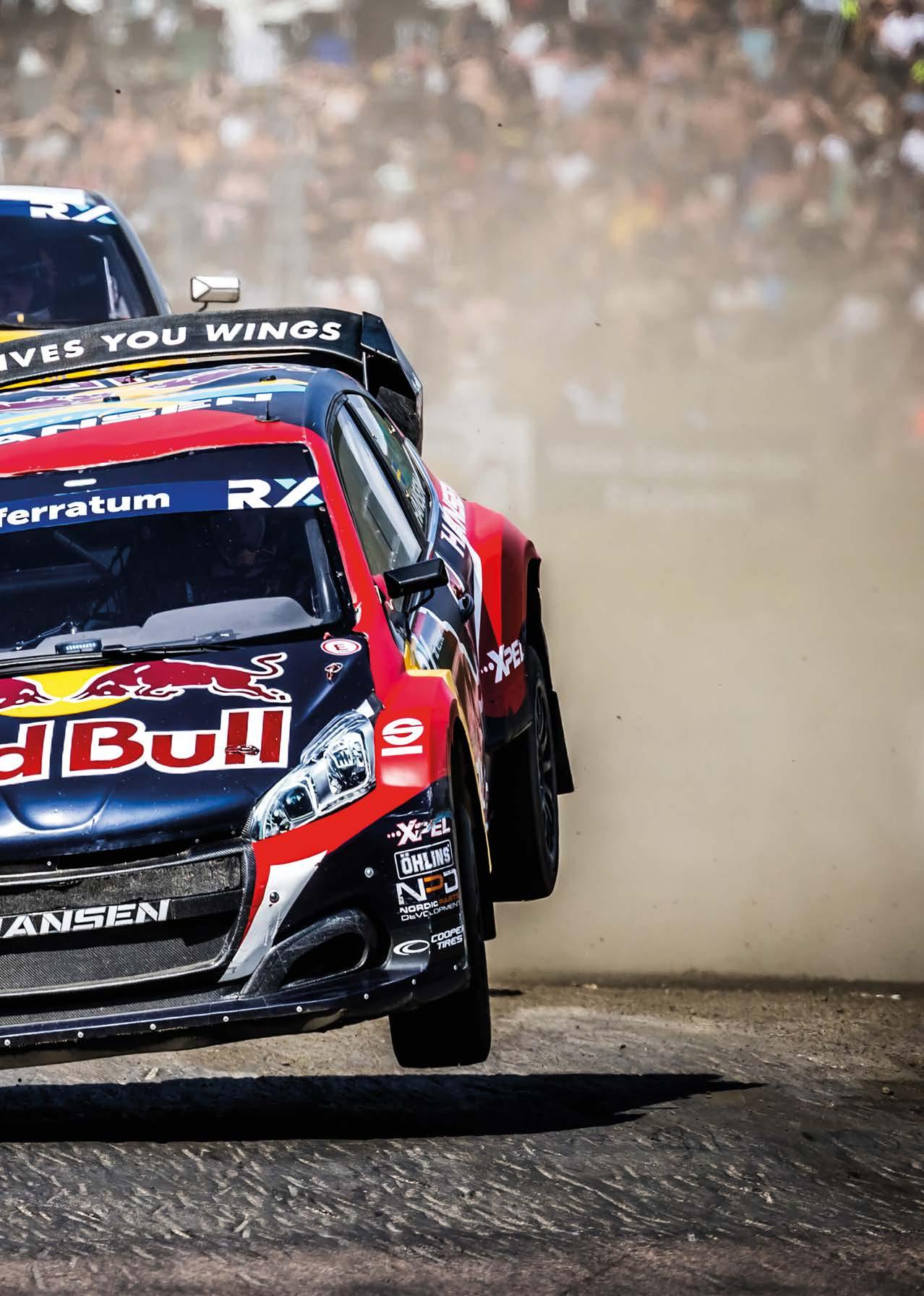
With short duration heats, the need for excessively large, and therefore heavy, battery packs is negated, while the instant torque of an electric powertrain perfectly suits the point and squirt nature of RX and its short course tracks.
Teams were given the choice of retro fitting their existing ICE Supercar class machines, or building bespoke cars to the new rules. In the case of Hansen Motorsport, which won the title in 2015, 2019 and 2021 and is headed by founder and principal, Kenneth, himself a 14-times European RX champion, it went the retro fit route.
Having previously been the factory effort for Peugeot Sport, Hansen took its successful, ICE-powered 208 RX1, a car under constant development since 2014, and turned it electric.
Pros and cons


According to Hansen, speaking at the Lydden Hill, UK, World RX round in July, there are pros and cons to each approach. For his team, it was the financial reality of building a completely new car, and having a well-proven platform to hand that swayed the decision. While those creating RX1e cars from scratch could optimise for the electric powertrain, rule breaks for retro fits could also be exploited. For example, there are lower weight limits on certain suspension parts. Conversely, wheel travel is limited to 250mm (previously in RX1 there was no limit, which remains the case for dedicated RX1e cars).
Hansen notes that at tracks such as Lydden Hill, the constraint on wheel travel is not a real issue, but that’s not the case everywhere RX visits.
‘On some tracks, where you have more jumps, harder kerbs, it could be a negative. But we have some positive things with the unsprung weight, which is always something interesting.’



The electric powertrain also provides greater packaging flexibility than the previous ICE. Though the location of the main drivetrain elements is fixed, they take up less space so some of the previous challenges created by the location of engine and transmission are removed.
When it comes to weight distribution, the EV drivetrain places the mass in different areas, compared to an ICE car, with a motor both front and rear.
OCTOBER 2023 www.racecar-engineering.com 23
‘We love to run these cars because you know, there’s no smell, no exhaust, it’s not noisy with people setting up their anti-lag systems. Yeah, we like it a lot’
Kenneth Hansen, team principal at Hansen Motorsport
Flowing in the wind
In electric racing, where the main powertrain components are spec, the advantages to be gained from fluids cannot be underestimated
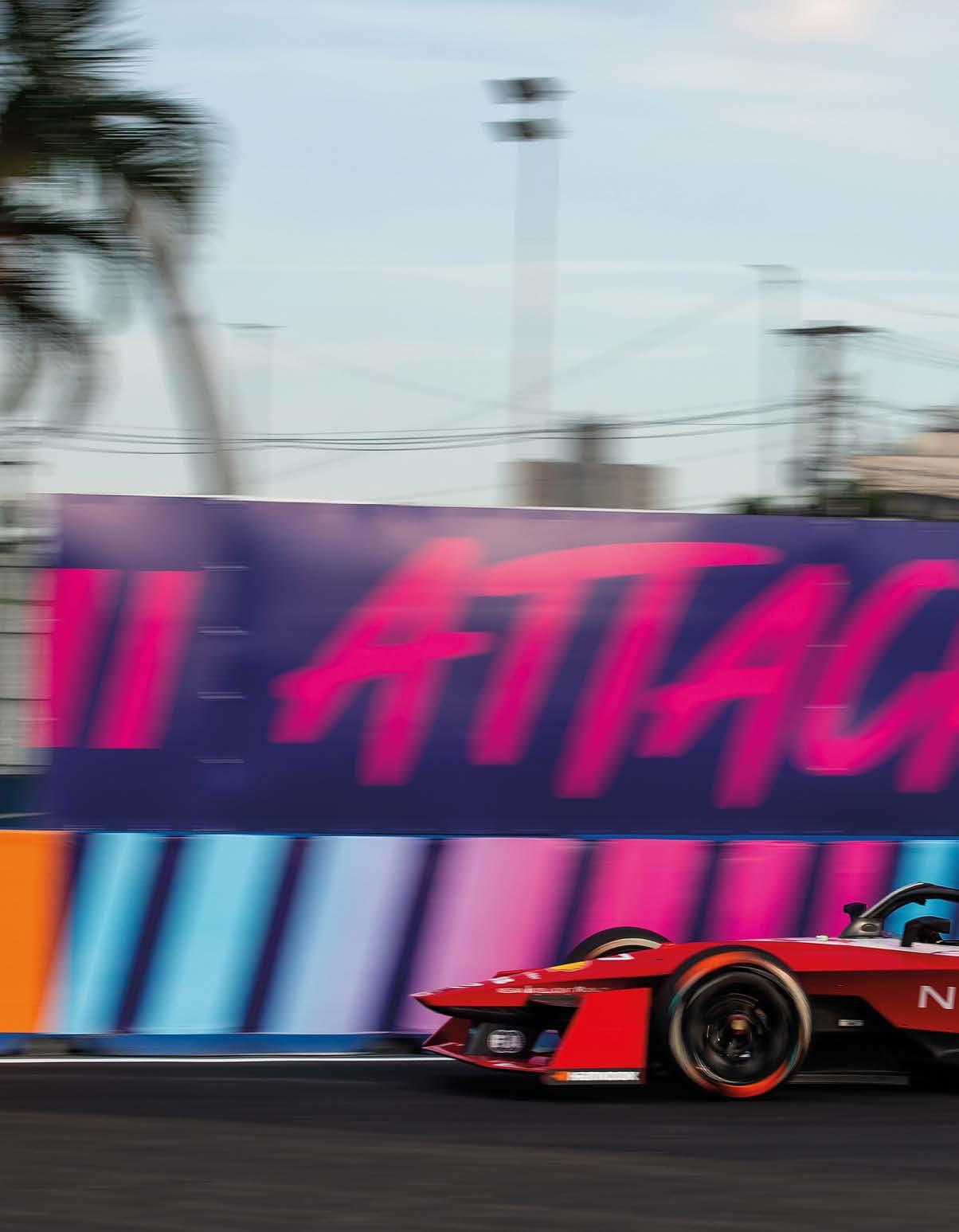 By SAM SMITH
By SAM SMITH
44 www.racecar-engineering.com OCTOBER 2023 FORMULA E – LUBRICANTS

OCTOBER 2023 www.racecar-engineering.com 45
Lou Johnson
‘Our hydrocarbon-based fluid is dielectric, so… it can come into direct contact with all the electrical parts without causing short cuts, and can therefore cool the motor more efficiently’
Florian Glattes, vice president for e-mobility solutions at Shell
With transmission efficiency in the Formula E world championship now said to be around 95 per cent, optimising the fluids within offers teams an opportunity to find crucial gains
Lotus launches new-age Type 66
Lotus has presented a new limitededition track-only sports car, the Type 66, which has been developed from the blueprints of a 1970s Can-Am vehicle that never raced.

The new car combines the original design of the British manufacturer’s cancelled North American monster with modern technologies, including ABS, anti-stall, power steering and a sequential gearbox.
On the instructions of Colin Chapman, Lotus designer Geoff Ferris worked on a Can-Am concept in the 1960s, but the project was shelved, and his Type 66 sketches were stowed away as the company opted to focus on Formula 1.
However, when the plans resurfaced decades later courtesy of Chapman’s son Clive, the Lotus design team converted Ferris’ drawings into 3D renders and set about reviving the Type 66 for a new customer market. Its release as a track day tool coincides with Lotus’ 75th anniversary.
The Type 66, which will be available in 10 units for £1 million each, is powered by a V8 pushrod engine capable of producing around 830bhp at 8,800 rpm. The bespoke forged crank, rod and pistons generate over 746 Nm of torque at 7,400 rpm, while Lotus says that 1,000 hours of computational
fluid dynamics modelling have resulted in more than 800 kg of downforce at 150mph.
The Type 66 design is classic per the original drawings, with prominent front wheel arches, a huge rear wing and exposed trumpet-style air intakes making it recognisable as a Can-Am machine. Its side-mounted radiators, which informed the design of the F1 championship-winning Lotus 72, point towards some of the innovation that the Lotus team could have brought to the Can-Am grid.
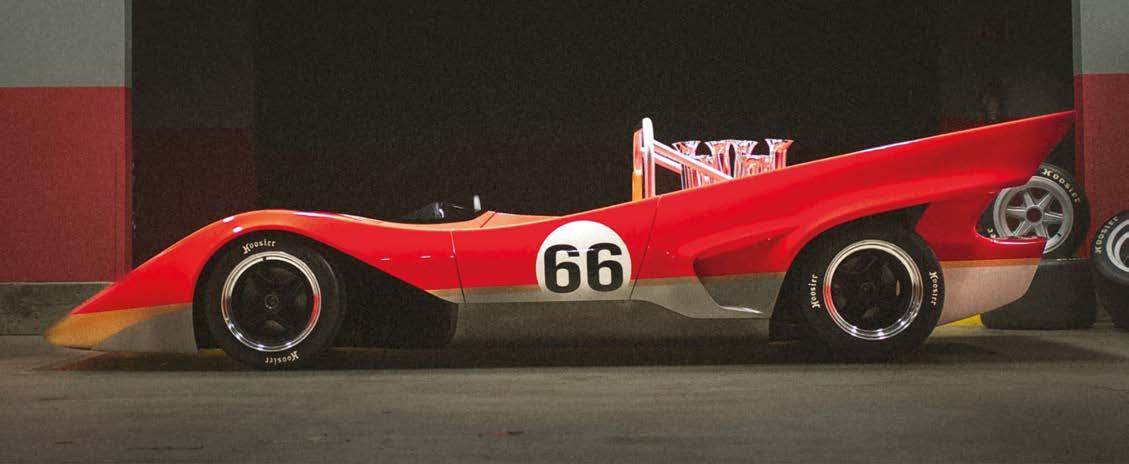
Careful ‘reinterpretation’ was also required to ensure the Type 66 kept up with 50 years’ worth of
safety advancements. It has a fixed rollover bar, inboard fuel cell, upto-date driver compartment and a carbon fibre bodyshell to provide driver protection and comfort.
‘The car would have shared many innovative features with our most successful F1 chassis, the Lotus Type 72, which was developed during the same era,’ said Clive Chapman. ‘These include sidemounted radiators which helped reduce front drag, increase front downforce and channel airflow through and over the car. The rear of the car incorporates a distinctive tail section, resembling the Le Mans endurance cars of the period. These features would have boosted its downforce considerably, compared to rivals, aiding high-speed stability and ultimately its lap times.’
Simon Lane, Lotus Advance Performance executive director, added: ‘The Type 66 perfectly blends the past and present. It takes drivers back in time, to the iconic design, sound and pure theatre of motorsport more than 50 years ago, with added 21st century performance and safety.’
Lotus claims that the Type 66 could match GT3 lap times, based on its DIL simulations at tracks including Laguna Seca, Spa-Francorchamps, Silverstone and Fuji. As a new creation from rediscovered plans, it is not eligible for historic racing, although the Type 66 resurrection project still enables a previously unseen racer to finally hit the track.
78 www.racecar-engineering.com OCTOBER 2023 BUSINESS – NEWS
????
The Type 66 carries some of the design cues and engineering solutions of the Type 72, the most successful of the Lotus Grand Prix cars
As a new car built to old designs the Type 66 is not eligible for historic competition and is expensive, but it follows faithfully the classic design of the era, and evokes memories of the Can-Am days





























 By CRAIG PORLEY
By CRAIG PORLEY

 By LAWRENCE BUTCHER
By LAWRENCE BUTCHER






 By SAM SMITH
By SAM SMITH


